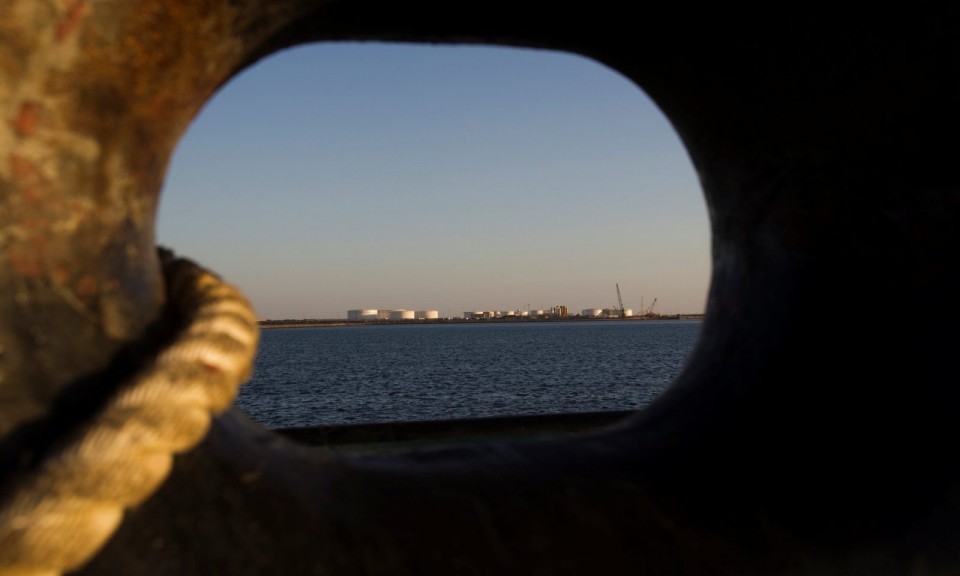
On November 11, as US President Donald Trump was visiting Hanoi, Vietnam, trucks started arriving in Zaranj on the border between Iran and Afghanistan. On board the vehicles were the first shipments of wheat from India – 15,000 tons, with 7 more to follow – heading into Nimruz Province, Afghanistan from the Iranian port of Chabahar.
These shipments, which departed India from the port of Kandla in Gujarat Province, will continue over the coming months and will follow a route designed over a decade ago to bypass and replace the existing land route that once linked India to Afghanistan via Pakistan, but which Pakistan cut off years ago to Indian commerce.
They fall under a trilateral agreement inked in May 2016 by Indian Prime Minister Narendra Modi, Iranian President Hassan Rouhani and Afghan President Ashraf Ghani.
In Trump-like fashion, Prime Minister Narendra Modi tweeted, “I congratulate Afghanistan and Iran on Indian wheat shipment being flagged off from Kandla to Afghanistan through Chabahar” as the trucks rolled into Afghanistan. Many critics had doubted that any shipments would ever make the journey.
India’s ambassador to Kabul, Manpreet Vohra told a crowd gathered to greet the arriving trucks at Zaranj that 110,000 tons of wheat will be shipped to Afghanistan through Chabahar in the coming months, representing a portion of the 1.1 million tons promised as a “gift” by India to Afghanistan.
Vohra was critical of Pakistan’s restriction of Indian access to Afghanistan. He promised the latter that India would now ensure it could export and import goods routinely and quickly via Iran.
“We all know that a particular neighbor of yours to the east has often placed restrictions on your transit rights,” Vohra stated. “This [new route] will provide you guaranteed access to the sea.”

Nimruz Provincial Governor Mohammad Samiullah went further, telling the same crowd that Afghanistan would no longer be dependent on Karachi, where Afghan merchants have been subjected to frequent border crossing closures and other impediments to trade.
Richard Rossow, a senior fellow who holds the Wadhwani Chair in US- India Policy Studies at the Washington, DC-based Center for Strategic and International Studies, told Asia Times via email that “Chabahar is very important to India. The country is committed to Afghanistan’s stability and reconstruction. Having direct, relatively inexpensive access is critical.”
He added: “Today, most access is indirect, or expensive – such as the new air route for supply delivery. Flagging off the first wheat shipment to Afghanistan via Chabahar is a major step.”
Despite President Trump’s efforts to isolate Iran and accuse it of failing to comply with the terms of the nuclear deal signed by the last US administration, there have been unusual signs of support from important American players in Afghanistan.
US Army General John Nicholson, commander of US combat operations in the country, spoke positively about the project during a Senate Armed Services Committee hearing in February. He described it as offering Afghanistan a viable and economic alternative to shipping all its goods via Pakistan.
“With over US$2 billion development aid executed since 2002, and another US$1 billion pledged in 2016, India’s significant investments in Afghan infrastructure, engineering, training, and humanitarian issues will help develop Afghan human capital and long-term stability,” he said.
“The US is asking India to consider increasing its support to Afghanistan, and I imagine India would use that opportunity to make the case that Iran provides a vital link to Afghanistan. In that context, the US may be more willing to tacitly support developments at Chabahar, as it helps India meet the request by the Trump Administration.”
India remains keenly aware of the security issues surrounding the opening of this new truck route, which has cost the lives of over 100 construction workers and other personnel over the past decade. What response might be forthcoming from the Taliban, ISIS and other groups opposed to an expanding Indian presence in Afghanistan is uncertain.
Morever, in light of Trump’s somewhat unexpected shift from an “Asia Pacific” to an “Indo-Pacific” definition of the region, it is unclear how or even if this new perspective dovetails with India’s embrace of Iran as it attempts greater access to Afghanistan.
“The term ‘Indo-Pacific’ as expanding on ‘Asia-Pacific’ highlights South Asia’s emerging role in issues that cover all of Asia,” said Rossow.
“Right or wrong, Asia-Pacific has tended to mean, in practice, littoral Pacific states. In a very real sense, this would mean the region covered by US Pacific Command. I am not certain we consider Iran or the African coast, for instance, in our planning for the ‘Indo-Pacific.’ So even ‘Indo-Pacific’ may not mean every nation which touches the Indian Ocean directly in terms of emerging practical cooperation and planning.”
India used the opening of the route to underscore its commitment to Afghanistan in terms of a much broader agenda involving joint reconstruction projects and other programs.
Regardless of how definitions of ‘Indo-Pacific’ sort out, it is clear that much more than shipments of wheat will result from this significant new connection.